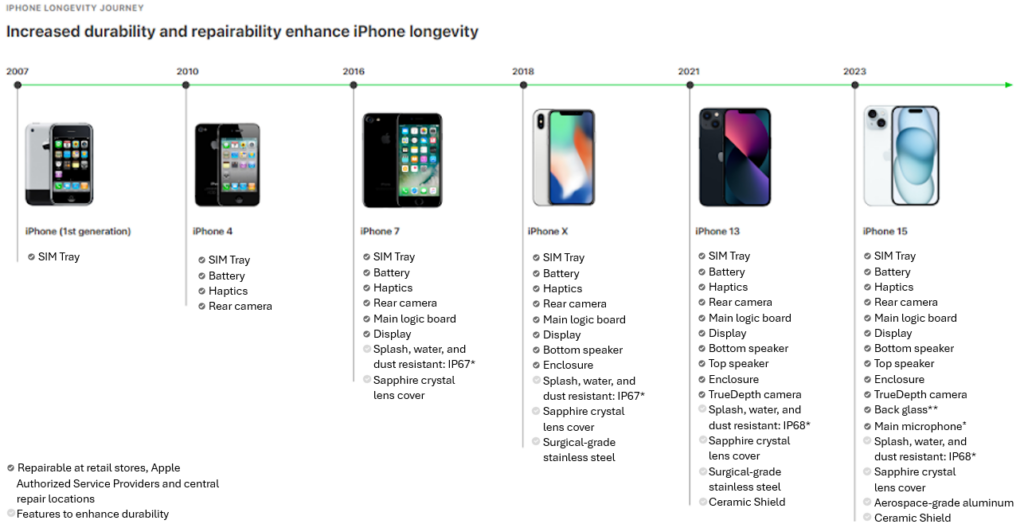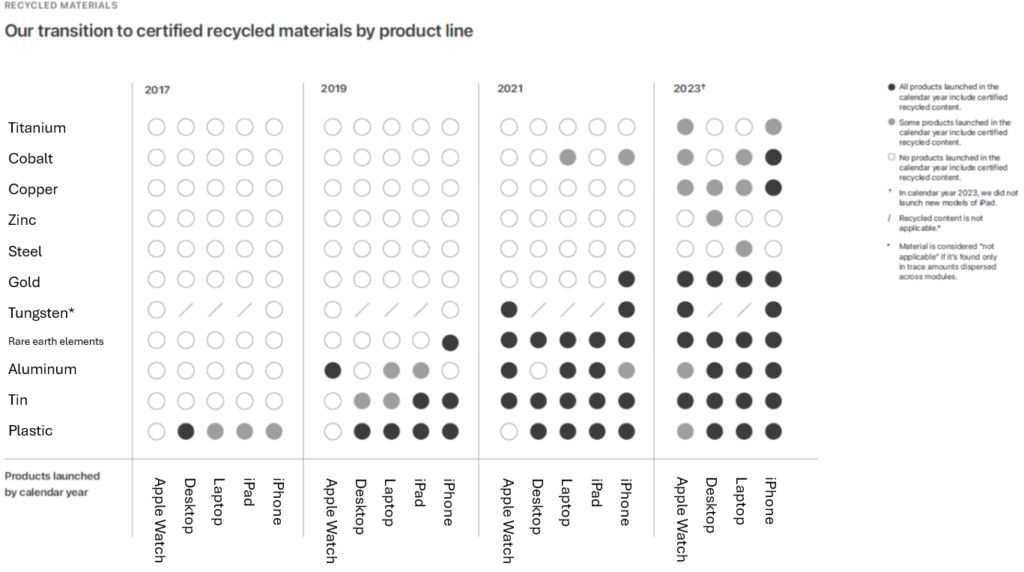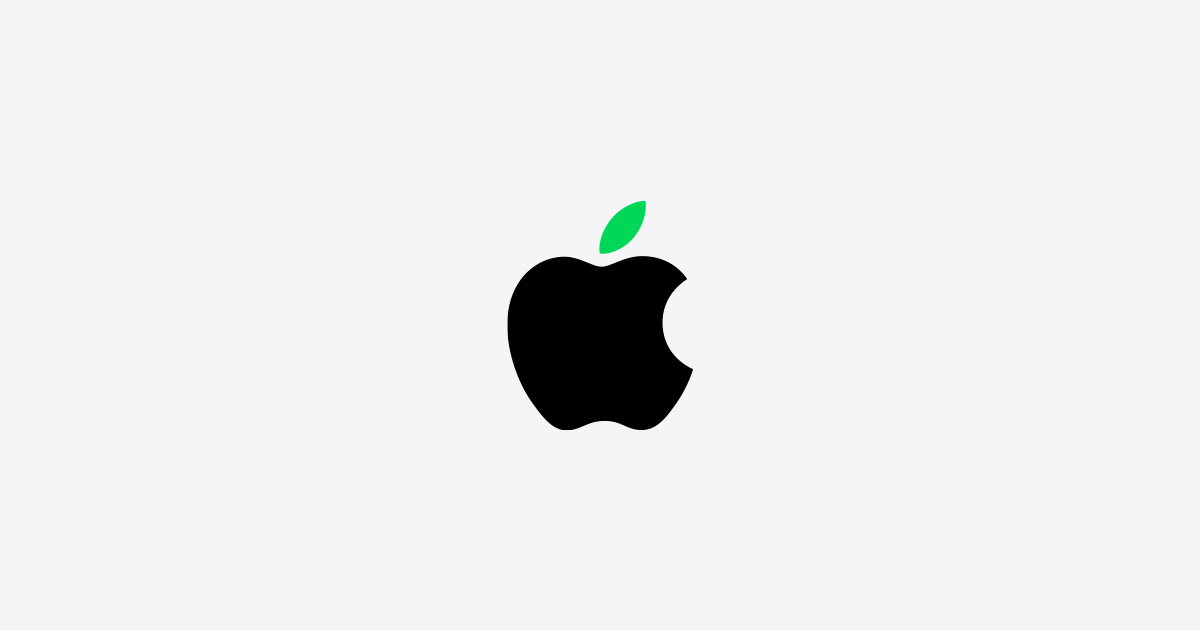As the world faces an unprecedented surge in toxic, nonbiodegradable electronic waste, Apple is working to address the issue by enhancing the durability and longevity of their products, while simultaneously advancing their recycling efforts and technologies.
From the fragile, first-generation iPhone in 2007 to the aerospace-grade aluminum iPhone 15 available today, Apple has prioritized designing for longevity. Their devices are now equipped with improved structural integrity and increased operating efficiency, making them more resistant to everyday wear and tear, and allowing them to maintain peak device performance over a longer period of time. Figure 1 below outlines the significant design improvements Apple has made to enhance the longevity of their iPhones, thereby reducing the frequency of replacements, and cutting down on electronic waste.
 Figure 1. Source: Apple’s 2024 Environmental Progress Report
Figure 1. Source: Apple’s 2024 Environmental Progress Report
In addition to focusing on product durability, Apple is managing their e-waste stream through ongoing advancements in their recycling efforts and technologies. Apple’s 2024 Environmental Progress Report highlights their commitment to climate action and emphasizes how they are working to expand the use of high-quality recycled content in their products and packaging, with the goal to rely exclusively on responsibly sourced recycled or renewable materials. Figure 2 below illustrates the progress Apple has made in increasing the recycled content in their products over time.
 Figure 2. Source: Apple’s 2024 Environmental Progress Report
Figure 2. Source: Apple’s 2024 Environmental Progress Report
By reusing end-of-life materials, the transition to certified recycled materials helps lower emissions and reduce the carbon footprint associated with traditional mining and material extraction, all while promoting a more circular and resource-efficient product lifecycle.
A notable example of Apple’s commitment to recycling innovation is their disassembly robot, Daisy. Daisy efficiently and precisely dismantles and recovers valuable materials from discarded iPhones, and sorts each device into its core components – metals, plastics, and earth elements. To foster industry-wide progress in sustainability, Apple has made their patented Daisy technology available free of charge through licensing to researchers and other electronics manufacturers in hopes that they will follow suit and work to increase the share of recycled materials in the supply chain.[1]
Through advances in product design, durability, and recycled materials and technologies, Apple demonstrates leadership in both innovation and environmental stewardship. Their multifaceted approach to reducing electronic waste not only enhances the user experience, but also serves as a powerful example of how advances in recycling technology and industry-wide collaboration can drive significant progress toward a more sustainable future.
If you are interested in reading more about corporate work to lower negative environmental impacts, please see other EP Insights from Terra Alpha here.
[1] https://www.apple.com/environment/pdf/Apple_Environmental_Progress_Report_2024.pdf
Photo: Apple

